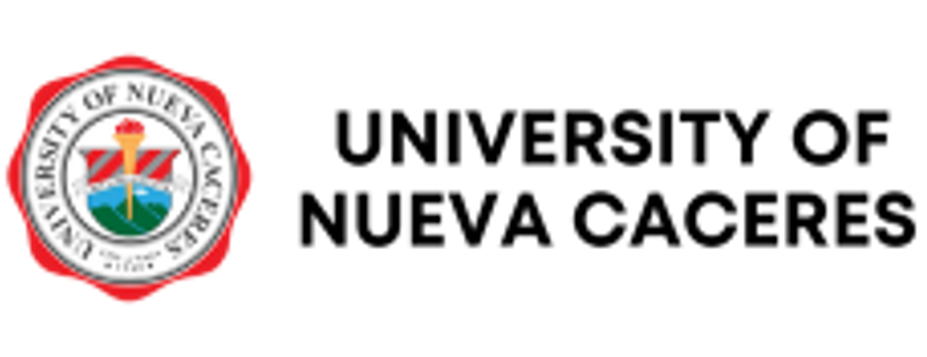Measuring Worker Perception on Remote Working Adoption During COVID-19 Pandemic: An Industrial Engineering Perspective
A Case Study in Indonesia for Identifying the Potential New Normal of Work Implementation
Keywords:
agile teamwork performance, measurement framework, remote working, working from homeAbstract
The COVID-19 which started in late 2019 has led to extraordinary measures by government and commerce, to control and reduce the spread of the virus. Many companies have had to rethink the way they work due to travel restrictions and cancellations of major events. While workers related to production activities as well as system-related workers such as bank tellers, cashiers, medical staff, and distribution operators are still working on site, the majority of the workforce in Indonesia has been encouraged to practice "working from home" or remote working during the pandemic. Remote Working means adapting to new circumstances, battling a new set of distractions, as well as experiencing an unprecedented mix of work and personal life. Committing to work from home without understanding performance indicators and drivers can lead to a company's operational failure. Even though the COVID-19 pandemic measures are decreasing, the need to implement a new normal of work that allows for flexible work arrangements and implementation of remote work is increasing. Therefore, the organization needs to understand and control the measures required to keep the company productive in the new work setting. This is important to maintain organizational resilience against any pandemics and technological disruptions, as well as to ensure organizational sustainability. Seven performance indicators of remote work performance and eight influencing factors have been compiled in this study by reviewing previous research on remote work, virtual teamwork, agile teamwork and knowledge management. Further studies are needed to verify the performance indicators and influencing factors, to reveal the correlations between the measures and to identify the most likely drivers of remote work that may transform an organization to its new setting.
Downloads
References
E. Baker, G. C. Avery, and J. Crawford, “RESEARCH AND PRACTICE Professionals Work From Home,” Res. Pract. Hum. Resour. Manag., vol. 15, 2007, [Online]. Available: https://opus.lib.uts.edu.au/bitstream/10453/6434/1/2007000202.pdf.
E. K. Dizaho, R. Salleh, and A. Abdullah, “Achieveing work life balance through flexible work schedules and arrangements,” Glob. Bus. Manag. Res., vol. 9, no. 1, pp. 455–465, 2017, [Online]. Available: http://search.ebscohost.com/login.aspx?direct=true&AuthType=shib&db=bth&AN=122717287&site=eds-live&scope=site&custid=uphoenix.
A. Kylili et al., “The role of Remote Working in smart cities: lessons learnt from COVID-19 pandemic,” Energy Sources, Part A Recover. Util. Environ. Eff., vol. 00, no. 00, pp. 1–16, 2020, doi: 10.1080/15567036.2020.1831108.
C. Spinuzzi, “Working Alone Together: Coworking as Emergent Collaborative Activity,” J. Bus. Tech. Commun., vol. 26, no. 4, pp. 399–441, 2012, doi: 10.1177/1050651912444070.
I. Hardill and A. Green, “Remote working - Altering the spatial contours of work and home in the new economy,” New Technol. Work Employ., vol. 18, no. 3, pp. 212–222, 2003, doi: 10.1111/1468-005X.00122.
L. Vyas and N. Butakhieo, “The impact of working from home during COVID-19 on work and life domains: an exploratory study on Hong Kong,” Policy Des. Pract., vol. 4, no. 1, pp. 59–76, 2021, doi: 10.1080/25741292.2020.1863560.
C. K. Tan, T. Ramayah, A. P. Teoh, and J. H. Cheah, “Factors influencing virtual team performance in Malaysia,” Kybernetes, vol. 48, no. 9, pp. 2065–2092, 2019, doi: 10.1108/K-01-2018-0031.
R. Ferreira, R. Pereira, I. S. Bianchi, and M. M. da Silva, “Decision factors for remote work adoption: Advantages, disadvantages, driving forces and challenges,” J. Open Innov. Technol. Mark. Complex., vol. 7, no. 1, pp. 1–24, 2021, doi: 10.3390/joitmc7010070.
A. Deshpande, H. Sharp, L. Barroca, and P. Gregory, “Remote Working and Collaboration in Agile Teams,” 2016.
B. B. Rehberg, M. Danoesastro, S. Kaul, and L. Stutts, “How to Remain Remotely Agile Through Covid-19,” Boston Consulting Group, 2020.
C. Stone, S. Horan, and P. Flaxman, “What does the future hold? Investigating the benefits and challenges of agile and remote working,” CIPD Appl. Res. Conf. 2018, pp. 1–11, 2018.
B. Choi and H. Lee, “Knowledge management strategy and its link to knowledge creation process,” Expert Syst. Appl., vol. 23, no. 3, pp. 173–187, 2002, doi: 10.1016/S0957-4174(02)00038-6.
H. Lee and B. Choi, “Knowledge management enablers, processes, and organizational performance: An integrative view and empirical examination,” J. Manag. Inf. Syst., vol. 20, no. 1, pp. 179–228, 2003, doi: 10.1080/07421222.2003.11045756.
Y. Baruch, “Teleworking: Benefits and Pitfalls as Perceived by Professionals and Managers,” New Technol. Work Employ., vol. 15, no. 1, pp. 34–49, 2000.
S. L. Jarvenpaa and B. Ives, “The global network organization of the future: Information management opportunities and challenges,” J. Manag. Inf. Syst., vol. 10, no. 3, pp. 25–57, 1994, doi: 10.1080/07421222.1994.11518019.
L. Chidambaram, “Relational development in computer supported groups,” MIS Q., vol. 20, no. 2, pp. 143–165, 1996.
C. Lin, C. Standing, and Y. C. Liu, “A model to develop effective virtual teams,” Decis. Support Syst., vol. 45, no. 4, pp. 1031–1045, 2008, doi: 10.1016/j.dss.2008.04.002.
R. Gerards, A. de Grup, and C. Baudewijns, “Do New Ways of Working increase work engagement ?,” Pers. Rev., vol. 47, no. 2, pp. 517–534, 2018.
W. B. Schaufeli and A. B. Bakker, “Defining and Measuring Work Engagement Bringing Clarity to the Concept,” in Work Engagement: a Handbook of Essential Theory and Research, Psychology Press, 2010, pp. 10–24.
M. P. T. Consulting, “Agility: Unlocking the potential of Individuals and Teams,” 2021. [Online]. Available: https://resources.morganphilips.com/documents/UK_MPTC_Agility_briefing_2021.pdf.
A. H. Gold, A. Malhotra, and A. H. Segars, “Knowledge management: An organizational capabilities perspective,” J. Manag. Inf. Syst., vol. 18, no. 1, pp. 185–214, 2001, doi: 10.1080/07421222.2001.11045669.
T. H. Davenport and L. Prusak, Working Knowledge: How Organizations Manage What They Know. 1998.
P. Gottschalk, “Strategic Knowledge Networks: The Case of IT Support for Eurojuris Law Firms in Norway,” Int. Rev. Law, Comput. Technol., vol. 14, no. 1, pp. 115–129, 2000, doi: 10.1080/13600860054953.
A. K. Gupta and V. Govindarajan, “Knowledge flows within multinational corporations,” Strateg. Manag. J., vol. 21, no. 4, pp. 473–496, 2000, doi: 10.1002/(SICI)1097-0266(200004)21:4<473::AID-SMJ84>3.0.CO;2-I.
C. W. Holsapple and K. D. Joshi, “Organizational knowledge resources,” Decis. Support Syst., vol. 31, no. 1, pp. 39–54, 2001, doi: 10.1016/S0167-9236(00)00118-4.
M. I. Rapert and B. M. Wren, “Reconsidering organizational structure: A dual perspective of frameworks,” J. Manag. Issues, vol. 10, no. 3, p. 287, 1998.
R. F. Hurley, G. T. M. Hult, E. Abrahamson, and S. Maxwell, “Innovation , Learning : An Organizational and Empirical Integration Examination,” J. Mark., vol. 62, no. 3, pp. 42–54, 1998.
G. Von Krogh, I. Nonaka, and M. Aben, “Making the most of your company’s knowledge: A strategic framework,” Long Range Plann., vol. 34, no. 4, pp. 421–439, 2001, doi: 10.1016/S0024-6301(01)00059-0.
J. Nahapiet and S. Ghoshal, “Social Capital, Intellectual Capital and the Organizational Advantage,” Acad. Manag. Rev., vol. 23, no. 2, pp. 242–266, 1998, doi: 10.1007/978-1-4614-5013-9_3.
F. M. Horwitz, D. Bravington, and U. Silvis, “The promise of virtual teams: Identifying key factors in effectiveness and failure,” J. Eur. Ind. Train., vol. 30, no. 6, pp. 472–494, 2006, doi: 10.1108/03090590610688843.
A. Powell, G. Piccoli, and B. Ives, “Virtual Teams: A Review of Current Literature and Directions for Future Research,” Data Base Adv. Inf. Syst., vol. 35, no. 1, pp. 6–36, 2004, doi: 10.1145/968464.968467.
C. Mumbi and T. McGill, “An investigation of the role of trust in virtual project management success,” Int. J. Netw. Virtual Organ., vol. 5, no. 1, pp. 64–82, 2008, doi: 10.1504/IJNVO.2008.016003.
D. Fariborz, “Organizational Innovation: A Meta-Analysis of Effects of Determinants and Moderators,” Acad. Manag. J., vol. 34, no. 3, pp. 555–590, 1991, [Online]. Available: http://amj.aom.org/cgi/doi/10.2307/256406.
Published
How to Cite
Issue
Section
Categories
Copyright (c) 2023 Tanika D Sofianti, Ivan Kurniawan, Aditya T Pratama, Jessica Florencia

This work is licensed under a Creative Commons Attribution-ShareAlike 4.0 International License.





















